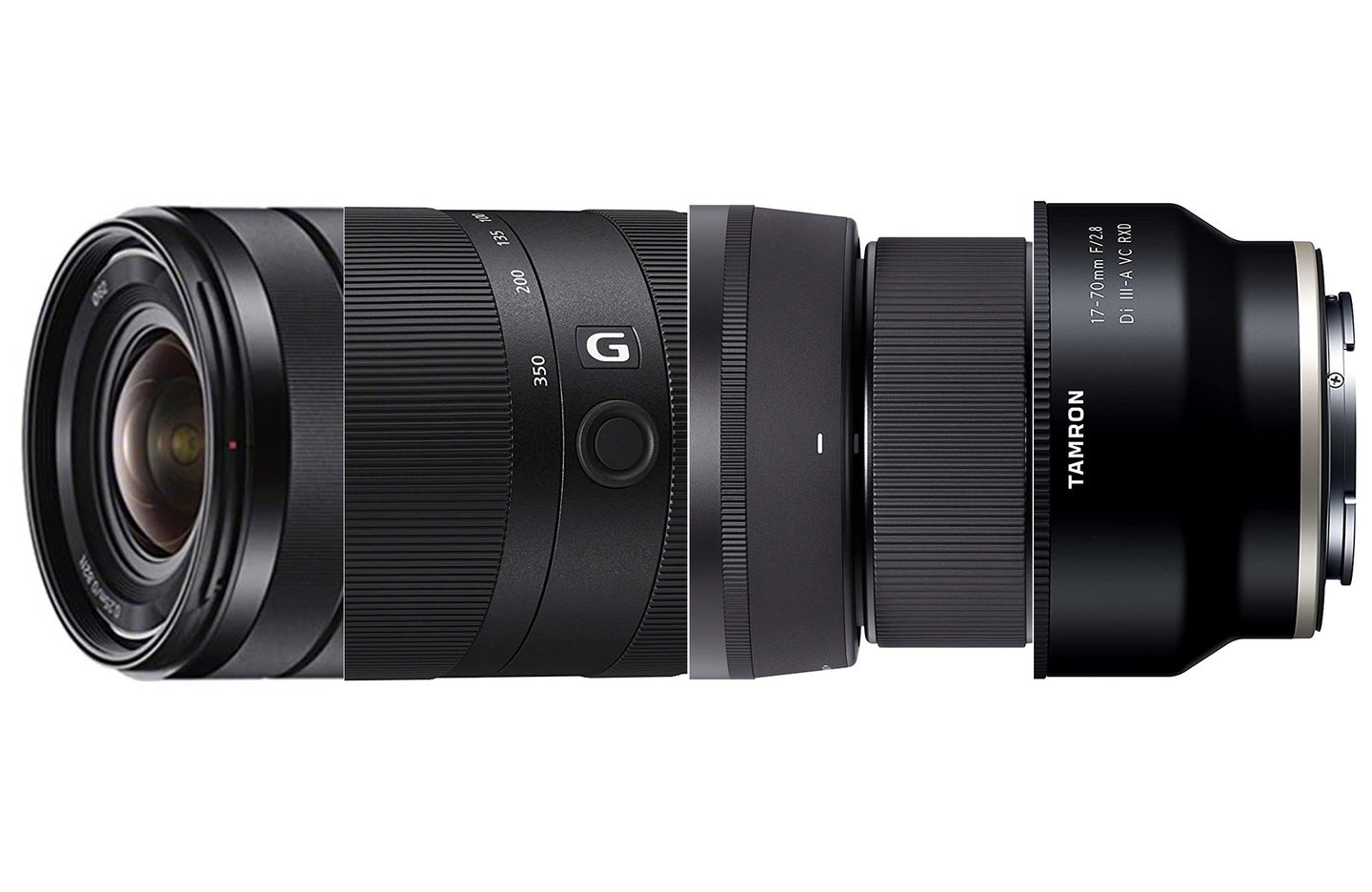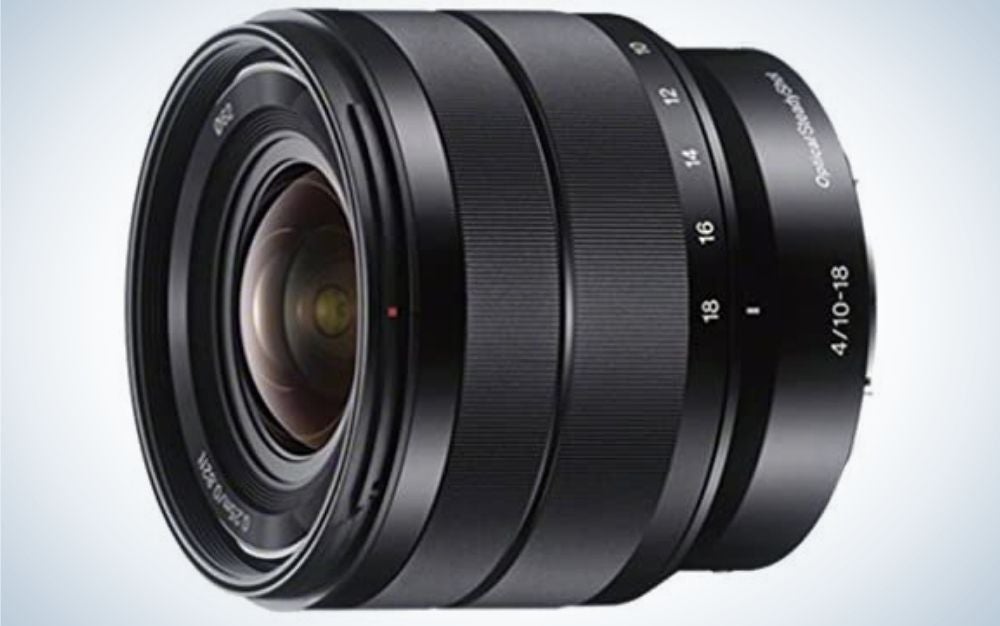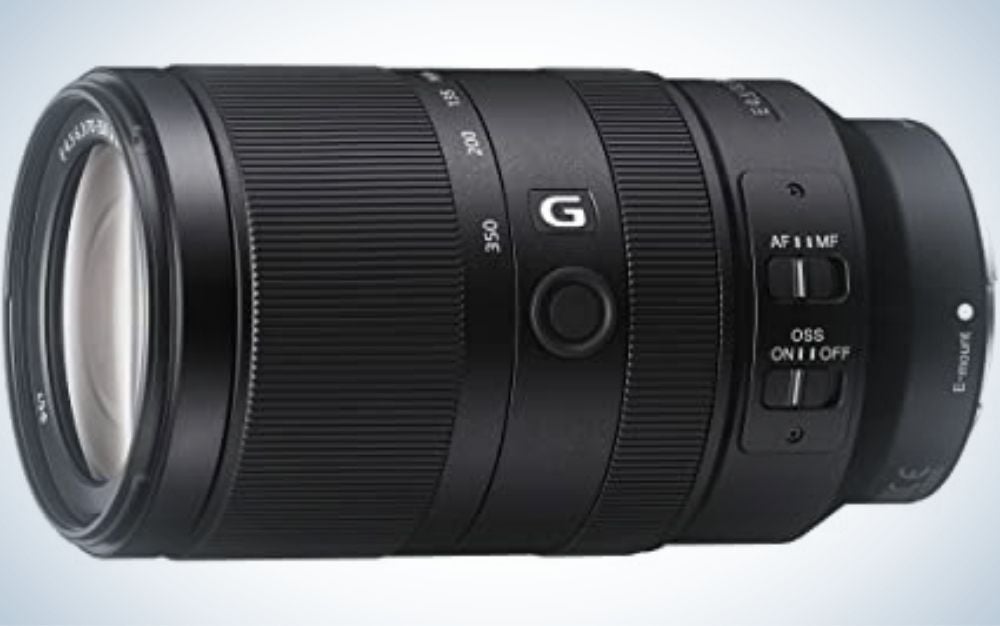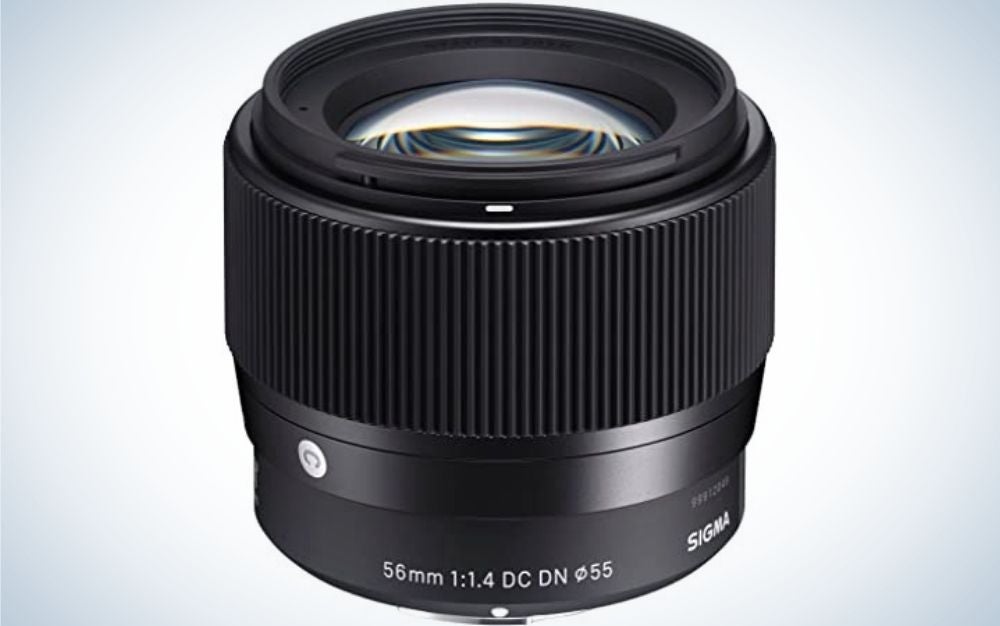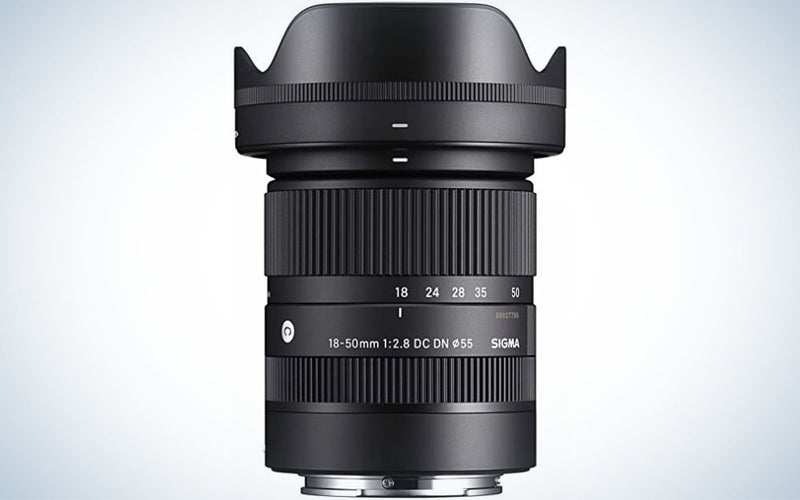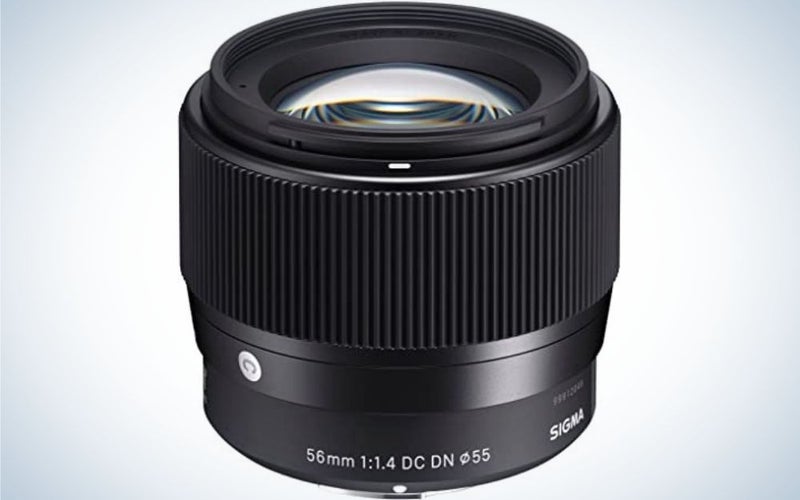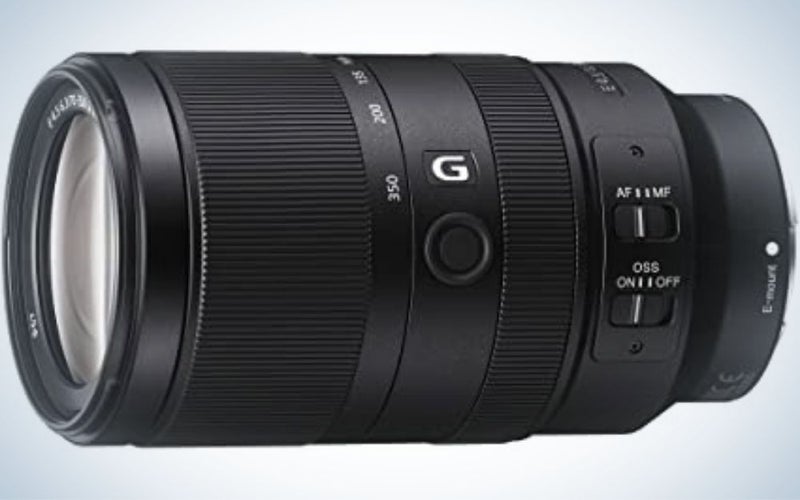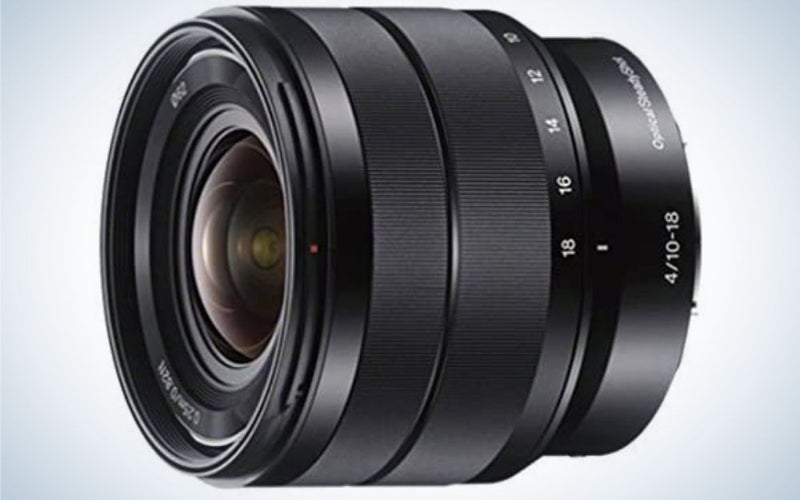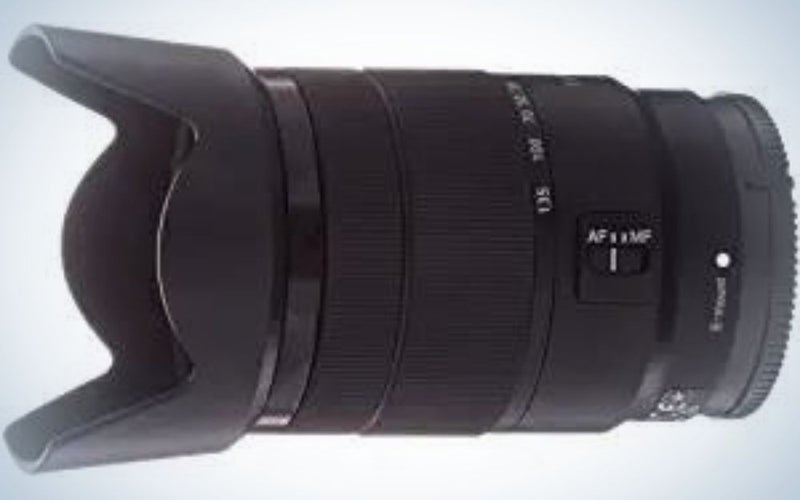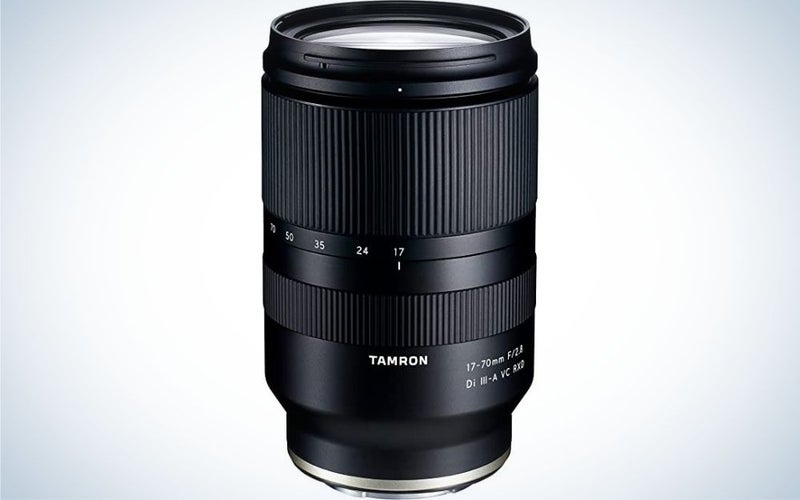We may earn revenue from the products available on this page and participate in affiliate programs. Learn more ›
The Sony a6000 is a fantastic camera–especially when paired with lenses for the Sony a6000–that has stood the test of time since its release in February 2014. Since then, Sony has launched several new versions and higher-spec models in the a6100, a6300, a6400, a6500, and the a6600. However, the a6000 is still one of the best beginner or backup cameras available.
While these lenses are great for the a6000, offering excellent image quality and a range of features, they would also be good companions to the newer, higher-end Sony models mentioned above. So rest assured, if you buy one of these best lenses for your a6000 and then decide to upgrade, they will carry over perfectly well.
- Best overall: Sigma 18-50mm F2.8 DC DN Contemporary
- Best for portraits: Sigma 56mm f/1.4 DC DN Contemporary
- Best zoom: Sony E 70-350mm F4.5-6.3 G OSS
- Best landscape lens: Sony E 10-18mm F4 OSS
- Best on a budget: Sony E 18-135mm F3.5-5.6 OSS
- Honorable mention: Tamron 17-70mm F/2.8 Di III-A VC RXD
Things to consider before buying lenses for the Sony a6000
There are many things you need to consider when buying a lens. However, before we move on to those, it’s important to note that the Sony a6000 is an E-mount camera, which means that it can only take a lens with Sony’s E-mount. When looking at lens options, especially third-party options like Sigma and Tamron, be sure to choose the correct mount.
The a6000 has an APS-C sensor, which results in a 1.5x crop factor. The crop factor means that the lens’s effective focal length will differ from what is listed. For example, if you are looking at a 50mm lens, it will act like a 75mm lens on the a6000. As a result, it’s helpful to do that math when choosing which focal length will be best for you.
Use
Your typical subject matter and shooting style will significantly impact which lens is best for you. For example, if you were to use the Sony a6000 for portrait photography, a prime lens, such as the 50mm, might be better than the 18-135mm, which is better suited for travel photography. Or, if you intend to use it as a street photography camera, you should consider the smaller pancake lenses because of their compact size.
Cost
As with most photography gear, cost is a significant factor. Though the Sony a6000 is relatively low-priced due to its 2014 release date, lenses can still get quite expensive. As you get into higher-quality lenses, the price will, of course, go up. Buying a quality lens for an older camera is still worth it, though; you can always future-proof yourself with a higher quality lens now and upgrade the camera later.
Size and Weight
The Sony a6000 is a small camera, weighing just 12.13 ounces. Large, heavy lenses will mean that your setup becomes front-heavy. The unbalanced weight can be awkward to carry and potentially cause aches on your neck or shoulder from carrying it. If staying lightweight is essential to you, focus on more compact lenses.
Build quality
Determining what you intend to use the camera for is important for choosing the best lens for the Sony a6000. Many forms of photography require you to be outside and sometimes in wet and windy conditions. Some types of shooting may mean the lens is liable to bump into things or generally get roughed up. If this is the case for you, it will be critical to have a lens with good build quality. A metal casing and weather sealing that can withstand the worst nature can throw at us are two things to look for.
Here are our picks for the best Sony a6000 lenses:
Best overall: Sigma 18-50mm F2.8 DC DN Contemporary
Sigma
Why it made the cut: Equivalent to a 27-75mm on a full-frame camera, The 18-50mm is a versatile focal range ideal for most photographic situations. With a wide, f/2.8 maximum aperture and a low price, this is the best lens you can buy for the money.
Key features:
- Weather sealed: No
- Image stabilization: No
- Weight: 10.2oz
- Filter thread: 55mm
- Effective focal length: 27-75mm
Pros
- Wide and constant aperture
- Lightweight
- Affordable
Cons
- No AF/MF switch
- No Image stabilization
Product description
The 24-70mm range is a very popular, versatile zoom range found in most photographers’ kits. Sigma’s 18-50mm f/2.8–which is equivalent to 27-75mm–is a fantastic lens that comes at an affordable price. The images it produces are sharp, with excellent center sharpness between f/2.8 and f/11 at most focal lengths. There is some softness on the edges, though it is minimal, especially considering the price of the lens.
The wide f/2.8 aperture allows you to create a nice separation between your subject and the background, with some very pleasing bokeh as well. It also makes it better in low-light conditions. Unfortunately, there is no physical AF/MF switch, which could be a deal-breaker for those who frequently switch back and forth between the two. But, the autofocus is excellent, with the STM motor quickly and very quietly achieving focus, even when going from close to far.
One of the biggest perks of this lens is its compact size. It’s only 2.9 by 2.6 inches and 10.2 ounces, which compliments the small size of the a6000. Overall, the Sigma 18-50mm is a great lens, especially for those just beginning in photography or want something lightweight and affordable.
Best for portraits: Sigma 56mm f/1.4 DC DN Contemporary
Sigma
Why it made the cut: With a fast f/1.4 maximum aperture and tiny 2.62 x 2.34 inch size, this is a beautifully bright little lens perfect for portraits.
Key features:
- Weather sealed: Yes
- Image stabilization: No
- Weight: 9.9oz
- Filter thread: 55mm
- Effective focal length: 84mm
Pros
- Weather sealed
- Wide and constant aperture
- Sharp photos
- Lightweight
Cons
- No image stabilization
Product description
85mm is considered by many to be the ideal portrait focal length, and the Sigma 56mm comes in at 84mm equivalent. Though it is part of Sigma’s “Contemporary” range, the second tier behind its premium “Art” line, it is still an incredible little lens. The fast f/1.4 aperture will allow you to tackle difficult lighting situations because the wider aperture allows more light in the camera. This is especially useful for indoor or nighttime portrait work without a lighting setup. The wide aperture also results in wonderful bokeh and beautifully shallow depth of field.
Sigma’s 85mm is extremely sharp, producing crisp, quality images. Furthermore, it’s small at only 2.34 inches in length and weighs just 9.9 ounces. Combined with the Sony a6000, the total weight is just 22.03 ounces, the same weight as the next lens on this list! So, you could also use this for street and travel photography as it’s light and small enough that it’s easy to carry, and you won’t scare the subject away.
The addition of weather sealing is also very welcome, and that means you can take it out for longer without needing to fear rain or bad weather.
Best zoom: Sony Alpha 70-350mm F4.5-6.3 G OSS Super-Telephoto APS-C Lens
Sony
Why it made the cut: The Sony 70-350mm is a powerhouse of a lens. With weather sealing, image stabilization, and a long zoom range, this lens is versatile enough to get you through many photography situations.
Key features:
- Weather sealed: Yes
- Image stabilization: Yes
- Weight: 22.1oz
- Filter thread: 67mm
- Effective focal length: 105-525mm
Pros
- Long zoom capabilities
- Weather sealed
- Image stabilization
- Fast autofocus
Cons
- Heavy
- Slow maximum aperture
Product description
When you need to cover that extra distance, the 70-350mm (equivalent to 105-525mm in full-frame format) is the lens to pick. It covers a huge range, ideal for different types of photography. For example, it’s perfect for sports and wildlife photography, where you can’t be as close to the subject as you’d like. It can also be a fun lens for certain landscapes, as the telephoto range visually shortens the distance between the background and foreground, resulting in aesthetically pleasing photos.
The slower f/6.3 at the lens’s most narrow focal length isn’t the best in low-light situations, but the in-lens stabilization will help with that. Sony’s image stabilization (OSS) is fantastic and does a wonderful job of ensuring your images are sharp. Image quality is sharp, and the autofocus is quick, so you’ll come away feeling happy knowing that you got the shot.
As this lens is less likely to be used indoors, Sony included dust and splash-resistant sealing on the lens. It is also made of sturdy polycarbonate, making it durable enough to take on your adventures. However, it is quite heavy at 22.01 ounces, which will be a bit front-heavy on the a6000.
Best for landscapes: Sony E 10-18mm F4 OSS
Sony
Why it made the cut: Sony’s 10-18mm is a sharp wide-angle lens with 3-stop optical stabilization and a lightweight yet sturdy metal body.
Key features:
- Weather sealed: No
- Image stabilization: Yes
- Weight: 8oz
- Filter thread: 62mm
- Effective focal length: 15-27mm
Pros
- Wide field of view
- Very lightweight
- Durable metal shell
Cons
- No weather sealing
Product description
Wide-angle lenses are incredibly useful, from landscapes and real estate to group photos and quirky portraits. Sony’s 10-18mm will give you 15-27mm in equivalent full-frame format, making this a solid wide-angle lens. It has a primarily metal shell yet only weighs 8 ounces. The lightweight and compact size make it a useful travel companion as it wouldn’t burden you too much. The metal build also provides protection when traveling, so you’ll feel confident that the lens can survive most bumps and nudges.
This lens has image stabilization to help you keep things pin-sharp even when using it in low light conditions. That’s even more helpful considering that the lens’s maximum aperture is only f/4, which takes away some low-light performance. However, it is a constant aperture, meaning you can use that throughout the focal range.
Best on a budget: Sony E 18-135mm F3.5-5.6 OSS
Sony
Why it made the cut: This low-cost lens is an ideal all-in-one zoom. At 18-135mm, it covers the full spectrum of what most photographers use and need. The addition of image stabilization means this lens is well suited for everyday use and is a great beginner lens.
Key features:
- Weather sealed: No
- Image stabilization: Yes
- Weight: 11.5oz
- Filter thread: 55mm
- Effective focal length: 27-202mm
Pros
- Versatile zoom range
- Low cost
- Compact
Cons
- Not weather sealed
Product description
Most photographers have a lens they love and always have on their camera, whether it’s the nifty fifty or a 24-70mm. This lens is perfect for that always-on status, as it covers a long focal range but is small–only 4.41 inches at maximum extension–and light enough to carry on your neck or shoulder all day. With dimensions of just 2.65 x 3.46 inches, it doesn’t take up much room in the camera bag, making it a great travel companion, especially if you’re traveling long term.
Image stabilization is a useful feature considering that the aperture is f/3.5 at its widest but narrows down to f/5.6 when zoomed all the way. It gives you that extra reassurance that you’ll get the photo you want without camera shake. The lack of weather sealing might be a deal-breaker for some, especially if you’re using it as your go-to lens. However, cameras and lenses are very robust these days, so you’ll still be able to use it in light rain in the short term.
Honorable mention: Tamron 17-70mm F/2.8 Di III-A VC RXD
Tamron
Why it made the cut: The Tamron 17-70mm f/2.8 is a fantastic lens at a reasonable price that offers a 25-105mm full-frame equivalent focal length. It is one of Tamron’s flagship lenses and checks many boxes a lot of photographers look for in a lens.
Key features:
- Weather sealed: Yes
- Image stabilization: Yes
- Weight: 18.51oz
- Filter thread: 67mm
- Effective focal length: 25-105mm
Pros
- Close focusing
- Versatile zoom range
- Affordable
- Fast & quiet autofocus
Cons
- Strong distortion across focal length range
Product description
The Tamron 17-70mm offers a lot of bang for your buck. It’s weather sealed, has Tamron’s Vibration Compensation (VC)–their term for image stabilization–and is a constant f/2.8. In addition, it can focus as close as 7.5 inches at the wide-angle end and 15.4 inches at the telephoto end, which makes it useful for macro photography.
The autofocus is super fast, and you can barely hear it when using it. This makes it great for situations where you need to be as quiet as possible. For example, you don’t want to be photographing a wedding, and just as the bride is about to say “I do,” your camera’s autofocus starts buzzing and causing a distraction. There is some noticeable barrel distortion at the wide end and pincushion distortion when zoomed in, but you can easily adjust that in editing.
It has almost no focus breathing, meaning the focal length doesn’t change as you adjust focus. In combination with the fast and quiet autofocus and vibration control, this lens is an excellent choice for video work on a budget.
FAQs
Q: Do you need a lens for Sony a6000?
You do need a lens for the Sony a6000. This camera is an interchangeable lens camera, meaning that you can change lenses to suit different situations, but you must use a lens for it to work.
Q: What kind of lens do I need for the Sony a6000?
This really depends on what you intend to take photos of. A prime lens is best used for portrait work, while a zoom lens is more versatile as it can be used for travel photography, sports photography and even landscape photography. That’s not to say that a prime lens can’t do any of the above or vice versa, it’s just that they offer specific pros and cons to each situation.
Q: What is the difference between A-mount and an E-mount lens?
Sony cameras come in two mount types, A and E. The camera mount is essentially the mechanism for attaching the lens to the camera, and different types generally have different diameters, meaning the wrong lens will not fit. The Sony A-mount is designed for cameras with a mirror inside it, such as a DSLR camera. The E-mount is designed solely for the mirrorless range. You can use A-mount lenses on E-mount cameras with an adapter but cannot use E-mount lenses on A-mount cameras.
Q: What is a prime lens used for?
A prime lens is a lens with a single, fixed focal length. Because there is only one focal length, you cannot zoom in and out with the lens to get close to the subject; instead, you have to physically move closer. The primary benefit of a single focal length is fewer elements, or glass, inside the lens. The less glass the light has to pass through usually means sharper and better quality images.
You can use prime lenses for any genre and type of photography. As long as you are in a situation where you can change lenses if needed, a prime lens will be a good choice. In fact, many photographers prefer primes because they are of higher quality and are frequently cheaper than zooms lenses.
Methodology
There were many considerations for choosing the lenses above, but ultimately, it came down to usage and budget. There are many lenses out there, both Sony and third-party lenses, and they all have their pros and cons. At the end of the day, the Sony a6000 is not one of Sony’s high-end models, and therefore the higher-end lenses that are available were not selected.
Instead, the editors and writers at Pop Photo chose the lenses that we believe our readers will find most useful. We looked at factors such as the weight of the lens, low light capabilities, and versatility. The Sony a6000 is a great camera for all kinds of situations, and the lens that you buy should, ultimately, be able to handle those varied situations.
Final Thoughts
The Sony a6000 is a great little camera that holds its own and continues to be one of Sony’s most popular choices. Despite being older, this camera has no shortage of lens options, especially as new iterations of the camera are released and lenses continue to be usable with this E-mount camera.
